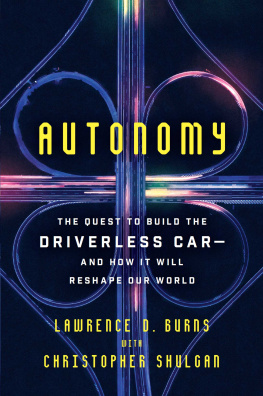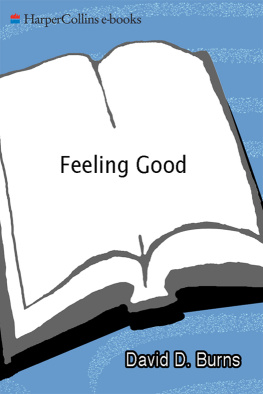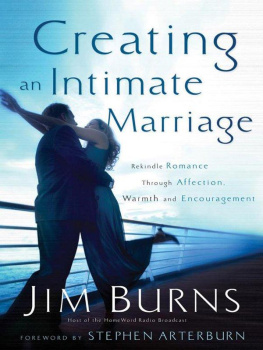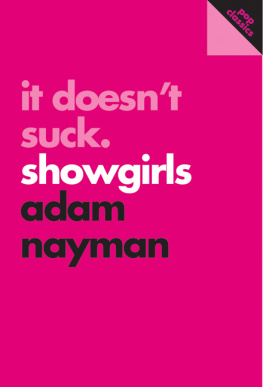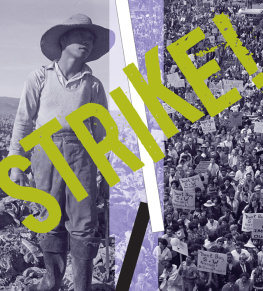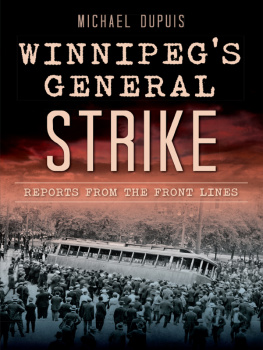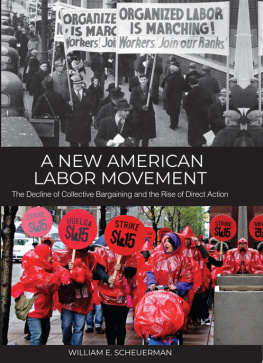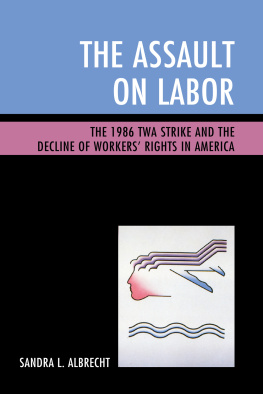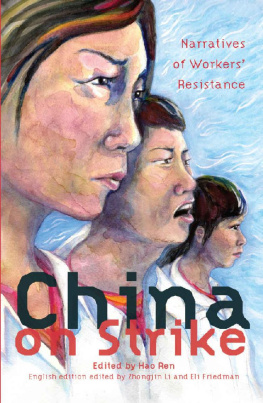


Copyright 2014 by Joe Burns
All rights reserved.
First Paperback Edition
10 9 8 7 6 5 4 3 2 1
No part of this book may be used or reproduced in any manner without written permission of the publisher.
Please direct inquiries to:
Ig Publishing, Inc
392 Clinton Avenue
Brooklyn, New York 11238
www.igpub.com
Library of Congress Cataloging-in-Publication Data
Burns, Joe, 1964-
Strike back : using the militant tactics of labors past to reignite public sector unionism today / Joe Burns.
1 online resource.
Description based on print version record and CIP data provided by publisher; resource not viewed.
ISBN 978-1-935439-95-0 (Ebook)
1. Strikes and lockouts--United States--History--20th century. 2. Collective bargaining--United States--History--20th century. 3. Government employee unions--United States--History--20th century. I. Title.
HD5324
331.890973--dc23
2014016525
For Warren J. Burns
CONTENTS
When I wrote my first book, Reviving the Strike, in 2011, my main focus was on private sector unions, and the urgent necessity of their engaging in traditional tactics, such as the effective strike. While I was pleased with the response to the book, one of the questions that remained unanswered was how public sector unions could engage in militant action, given the repressive state of current labor law.
Since studying the past can help illuminate the present and provide a path for the future, I began to examine an often overlooked era in union history, the public employee strike wave of the 1960s and 1970s. With over half of this todays union members concentrated in the public sector, and given the high profile of recent public employee battles in Wisconsin and Ohio, examining the historical struggles of public workers seemed a timely and important issue.
Additionally, in traveling around the country discussing Reviving the Strike, many of the workers I spoke with were public employees. What I learned from their experiencesas well as my own background as a union negotiatorwas that the labor movement desperately needs new ideas and new sources of inspiration. Barely one-in-twenty private sector workers belong to unions today, the lowest level since the early 1900s. Public employee unions, one of the few remaining strongholds of unionism, are suffering under withering attacks on their legitimacy. Despite this, too many in the labor movement want to continue with business as usual, refusing to address the crisis threatening their very existence.
This is why studying the public employee rebellion of the 1960s and 1970s is so important. During that time, millions of public workers demonstrated and struck in one of the greatest explosions of working class power and militancy in US history. Embarking on this project opened my eyes to an intense period of labor struggle that receives far too little attention from labor historians and activists.
Todays generation of public employee unionists can learn a lot from this incredible history, in particular, about how to successfully confront repressive labor law. During the 1960s and 1970s, millions of public workers, normally law abiding citizens, protested, marched on school board meetings, and defiantly struck to win collective bargaining rights. The tactics they used are the subject of several chapters of Strike Back, including a discussion of the right to strike. With effective trade unionism outlawed for private sector workers, and more and more public employees being denied bargaining rights, it is not conceivable that the labor movement will be revived in any meaningful way without workers violating labor law, as their counterparts half a century ago did.
Ultimately, the rebirth of the labor movement will be because of bold ideas. It is likely when the labor movement comes back, it will not be in dribs and drabs, but in a great upsurge. Like the Wisconsin public worker protests of 2011, and the Occupy movement, such mass movements seem to come out of nowhere as people move forward in unpredictable ways. Studying the public employee rebellion of the 1960s and 1970s can provide a springboard for discussing ideas to help jumpstart a similar burst of union activism.
But above all, the public employee upsurge of the 1960s and 1970s offer an example of hope, a commodity in short supply for todays labor movement. Some look at the power of corporate America, declining union density, the attacks on the public sector, and conclude that labors time has come and gone. I dont. Instead, as the story of the 1960s shows, when an idea takes hold, and people organize around it, great things can be accomplished.
Public employee unions are under relentless attack. In a remarkable shifting of blame, public employees have been targeted as the cause of the nations fiscal problems, rather than the Wall Street profiteers who plunged the US into the greatest financial crisis since the Great Depression of the 1930s. Public workers are currently facing assaults on multiple fronts, including legislative attacks on their collective bargaining rights, bipartisan demands to gut hard won job protections and retirement benefits, and threats to privatize public services. In this hostile environment, understanding the incredible history of public employee militancy is a matter of survival for todays public sector unions.
The public employee strike wave of the 1960s and early 1970s provides historical evidence for the necessity of reviving the traditional, production-halting strike. In my previous book, Reviving the Strike, I argued that the contemporary labor movement needed to focus on redeveloping an effective strike. Reviving the Strike focused primarily on private sector unionism, using relatively few examples from the rich history of public employee unionism. This book aims to correct that imbalance, while also using the history of public employee unions as a jumping-off point to continue the larger discussion of how to regain union power. For a new generation of public employee unionists facing unprecedented attacks on their bargaining rights, learning this history is essential.
Prior to attending law school, I was the president of Local 1164 of the American Federation of State County and Municipal Employees (AFSCME). Even as an involved public employee trade union leader, I knew very little about the birth of the public employee union movement. While there were plenty of books on the struggles of private sector workers in the 1930s, not many materials covered the equally inspiring struggle of public workers in the 1960s and 1970s. For example, the official history of our union stressed the role of politicians in passing laws permitting collective bargaining, ignoring the story of the tremendous grassroots upsurge that was actually responsible for the rise of public employee unions. As Joseph McCartin, one of the few historians to extensively write about public employee strikes, points out, The explosive rise of public sector unions in the United States in the 1960s and early 1970s resembled in many ways the breakthrough of industrial unionism in the 1930s. (N)ewly organized government workers behaved just as militantly as did auto and steel workers a generation earlier. Today, as public employee unions face pressure on multiple fronts, the traditional methods of gaining influenceincluding lobbying and electing friendly politicianshave become less effective. Thats why learning about the militant burst of collective action during the 1960s and 1970s is so important.
Next page

